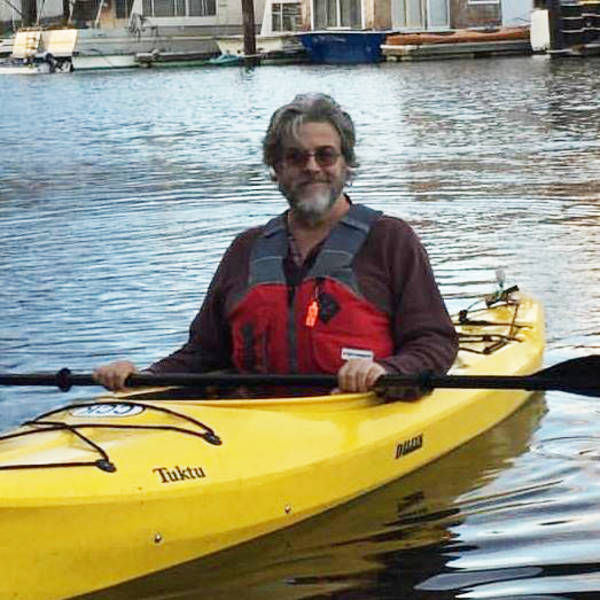The development company Cadiz wants to sell billions of gallons of groundwater from one of the driest places in North America: Mojave Trails National Monument. Acting Interior Secretary David Bernhardt was part of the firm that lobbied to green-light the project, which has yet to receive a full environmental review.
Earlier this month, President Trump nominated former energy lobbyist David Bernhardt to become our next secretary of the Interior. NPCA opposes the nomination. The petroleum industry insider has dozens of conflicts of interest from his lobbying career that affect his ability to manage America’s public lands responsibly. During his tenure as acting secretary of the Interior, he has repeatedly prioritized private interests over public and environmental health. Bernhardt was also responsible for allowing widespread preventable damage to national parks and putting visitors at serious risk by instructing the National Park Service to keep park sites open to the public without adequate staffing during the recent partial government shutdown — a move that violated at least four federal laws.

David Bernhardt during his 2017 swearing-in ceremony as deputy secretary for the Department of the Interior.
Department of the Interior photo.But what’s of most concern to me is the fact that Bernhardt and his former lobbying firm, Brownstein Hyatt Farber Schreck, have represented the land and water resource development company Cadiz Inc. to advance a devastating proposal to mine water from the California desert where I live and work.
Imagine a desert landscape so dry it made the record books. Imagine a place where few plants grow more than a foot tall, animals must go without drinking for months, and the very few reliable sources of water are separated by miles of rock and cacti.
Now imagine a company trying to promote this supremely arid landscape as a smart, reliable source of water.
Sadly, it’s no dystopian fantasy. For decades, Cadiz has been trying to sell groundwater from one of the driest places in North America: Mojave Trails National Monument. But despite massive opposition to the project, the company has evaded full environmental review. Bernhardt served on the Trump administration transition team that named the Cadiz water mining project as one of its top 50 “emergency and national security” priorities, despite it being neither. Now, he could become the next secretary of the Interior.
Cadiz, which owns property completely surrounded by Mojave Trails, wants to tap into an ancient aquifer underlying not only its inholding, but thousands of square miles of Mojave Trails, Mojave National Preserve and Joshua Tree National Park. The company claims that it can pump an average of more than 16 billion gallons of water each year from the aquifer for 50 years without harming any springs, seeps, wildlife or plants on the surface. Cadiz maintains that the aquifer receives about two thirds that amount in annual recharge from rain and melting snow.
But the U.S. Geological Survey and the National Park Service, two of our nation’s most respected institutions, find the Cadiz-sponsored science to be flawed (PDF), and the project would pump up to 25 times the safe yield. And new study published in 2018 has conclusively linked the aquifer Cadiz would mine to at least five springs in Mojave Trails. That means that if Cadiz lowers the water table by pumping water for export, water sources crucial to the survival of desert wildlife could be destroyed.
Despite the new science underscoring the risk Cadiz poses to the desert, the company has so far successfully evaded federal environmental review. A 2015 decision by the Obama administration that affirmed Cadiz needed to undergo review under the National Environmental Policy Act was reversed in the first months of the Trump administration.
That reversal saved the proposal from the dustbin of corporate history. Federal environmental review would almost certainly kill the project, by revealing just how little water Cadiz could pump from the Mojave before doing irreversible damage to the desert. That same concern killed a previous version of the project in October 2002. That’s when Cadiz’s business partner, the Metropolitan Water District of Southern California, pulled out, citing the likelihood that the project wouldn’t produce enough water to provide a return on its investment.
California has its own environmental review law, the California Environmental Quality Act, but Cadiz was able to work around that law. The company arranged for its largest customer, Orange County’s Santa Margarita Water District, to conduct a state environmental review. The water district was promised incentives, including millions of dollars in free water, if it approved the project. Santa Margarita conducted a review based in large part on Cadiz-sponsored studies that the National Park Service found flawed. NPCA and other environmental groups challenged Santa Margarita in court, highlighting the egregious conflicts of interest that permeated its environmental review, but lost.

California Legislation Protects Desert, Calls Water Mining Proposal Into Question
Legislation defends California’s national parks and monuments from the greatest, most urgent threat.
See more ›In response to the Trump administration eliminating required federal agency review of Cadiz, NPCA and our allies have been working to pass legislation at the state level that would require Cadiz to submit to a state agency assessment. Earlier this month, state Senator Richard Roth introduced a bill that would accomplish this goal. The move follows a recent letter (PDF) from the California Department of Fish and Wildlife to Cadiz’s CEO that confirms Santa Margarita’s review was severely flawed.
Along with state legislative actions, the scientific case against the project continues to get stronger: two independent, peer-reviewed studies published in 2018 have solidly linked local springs to the aquifer Cadiz would mine. These include Bonanza Spring, the largest source of surface water in more than a thousand square miles of desert. One of the studies, mentioned earlier, also roundly rebuts Cadiz’s claims about the rate at which the aquifer is refilled by rain and snow, pointing out that those estimates are based on data from a single weather station in one of the wettest parts of the Mojave, during a 40-year wet phase of a regional climatic cycle. This means Cadiz can’t extract the water it proposes to without damaging the fragile Mojave ecosystem.
Stay On Top of News
Our email newsletter shares the latest on parks.
The science is important, but it merely reaffirms what common sense already tells us: the driest parts of the Mojave Desert are not a sustainable water source for California. Conservation, rainwater capture and recycling are far more sustainable and cost-effective ways to make sure there’s enough water to go around.
The fight to stop the Cadiz project once and for all will continue. Rejecting Bernhardt’s nomination for Interior secretary is an important part of that fight. There is simply too much at stake — in California and around the country — to allow someone with his anti-conservation background to manage our nation’s public lands.
About the author
-
 Chris Clarke Former Ruth Hammett Associate Director, California Desert Program
Chris Clarke Former Ruth Hammett Associate Director, California Desert ProgramChris joined NPCA in 2017. He works with desert communities to protect national parks, monuments, and other protected places, and the landscapes that surround them.
-
General
-
- NPCA Region:
- Pacific
-
Issues


